Figures & data
Table 1. Site description including name and location (latitude and longitude), canopy height, duration of measurements, stand age, dominant species composition, and references for each flux site in this study
Table 2. Standard deviations and ranges of model parameters optimised
Fig. 1 The seasonal variations in 8 d average air temperature, Ta (a–c), cumulative 8 d solar radiation, Sw (d–f), and 8 d average vapour pressure deficit, VPD (g–i), for CBS, SKOA and UMBS.

Fig. 3 Seasonal changes in NDVI, EVI and Vcmax: (a–c) for CBS during 2003–2005; (d–f) for SKOA during 2000–2002; and (g–i) for UMBS during 2000–2002.
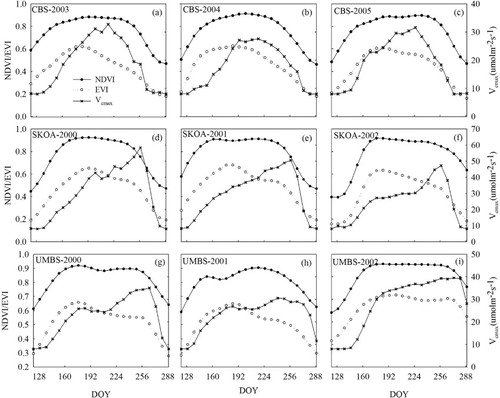
Fig. 4 Ensemble daily (24 h) GPP, SH and LE fluxes, and observations: (aa–ai) at CBS during 2003–2005; (ba–bi) at SKOA during 2000–2002; and (ca–ci) at UMBS during 2000–2002. The black and grey dots showed predicted and observed GPP, SH and LE, respectively.
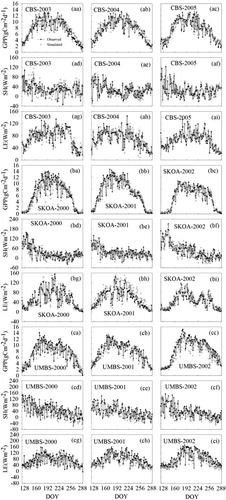
Table 3. Statistics of the linear regression (Y=aX+b) between observed (as Y) and simulated (as X) daily fluxes of GPP (g C m−2 d−1), LE (W m−2) and SH (W m−2)
Fig. 5 Relationships between (aa–ai) NDVI and (ba–bi) EVI and Vcmax over the growing seasons from DOY 121–289 during 2003–2005 at CBS. Data were divided into two phenological phases: first phase (solid circles) and second phase (open circles).
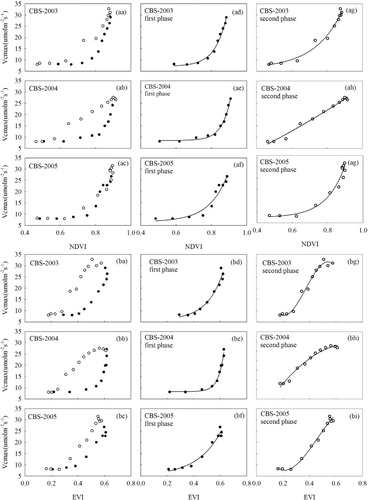
Fig. 6 Relationships between (aa–ai) NDVI and (ba–bi) EVI and Vcmax over the growing seasons from DOY 121–289 during 2000–2002 at SKOA. Data were divided into two phenological phases: first phase (solid circles) and second phase (open circles).
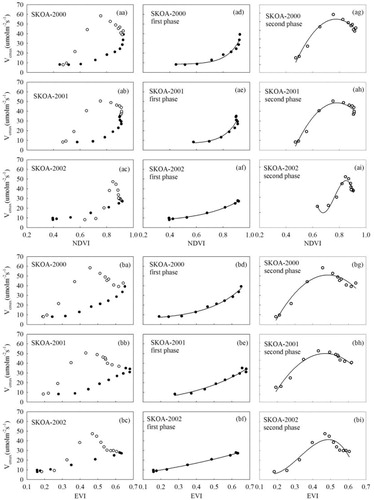
Fig. 7 Relationships between (aa–ai) NDVI and (ba–bi) EVI and Vcmax over the growing seasons from DOY 121–289 during 2000–2002 at UMBS. Data were divided into two phenological phases: first phase (solid circles) and second phase (open circles).
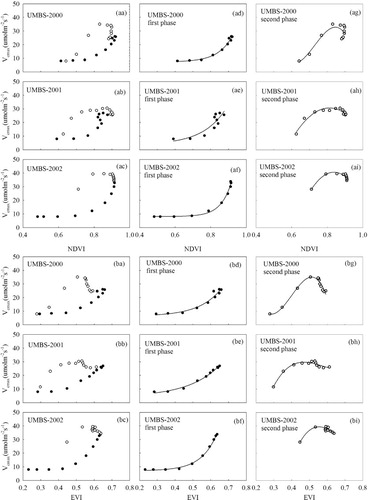
Table 4. Regression results of Vcmax (y, µmol m−2s−1) with vegetation indices (NDVI and EVI). Only the best regression models are shown, and the highest R2 and significance level are indicated

